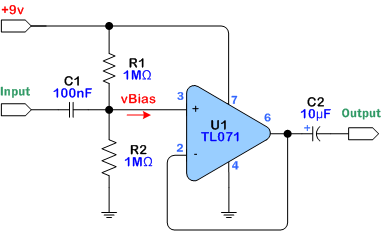I have some 4.7M and 10M resistors to try in my TL072 buffer - will give it a try over weekend, and do some experiments with an acoustic with piezo. cheers again for the great assistance...
SJF
SJF
30% off all Honey Amp kits, check it out at https://store.ssguitar.com !
This section allows you to view all posts made by this member. Note that you can only see posts made in areas you currently have access to.
Show posts MenuQuote from: Roly on May 22, 2013, 03:14:17 PMThanks Roly yhat has made a pretty good improvement - its starting to sound like a guitar amp. The problem I seem to be getting now is that after a few minutes of pay the cip starts to get overloaded and gets noticably distirted sound creeps in. I think Kaz mentioned that i need to get a heat sink. How does one place a heatsink on 8pin DIP on a breadboard. I have a couple small heatsinks but they require a screw/nut/washer and generally go through a pcb. Found this on the jay car website. would this be suitable - its a type of adhesive heatsink for different package - but
For direct input from a passive guitar you would be better off using the TL071 op-amp circuit, changing R1 and R2 to 2.2Meg to get 1Meg input resistance, and if you really need more gain than the chip amp's 30-odd dB, then altering the TL071 feedback from a voltage follower to a degree of gain.
 ... http://www.jaycar.com.au/productView.asp?ID=HH8580
... http://www.jaycar.com.au/productView.asp?ID=HH8580





